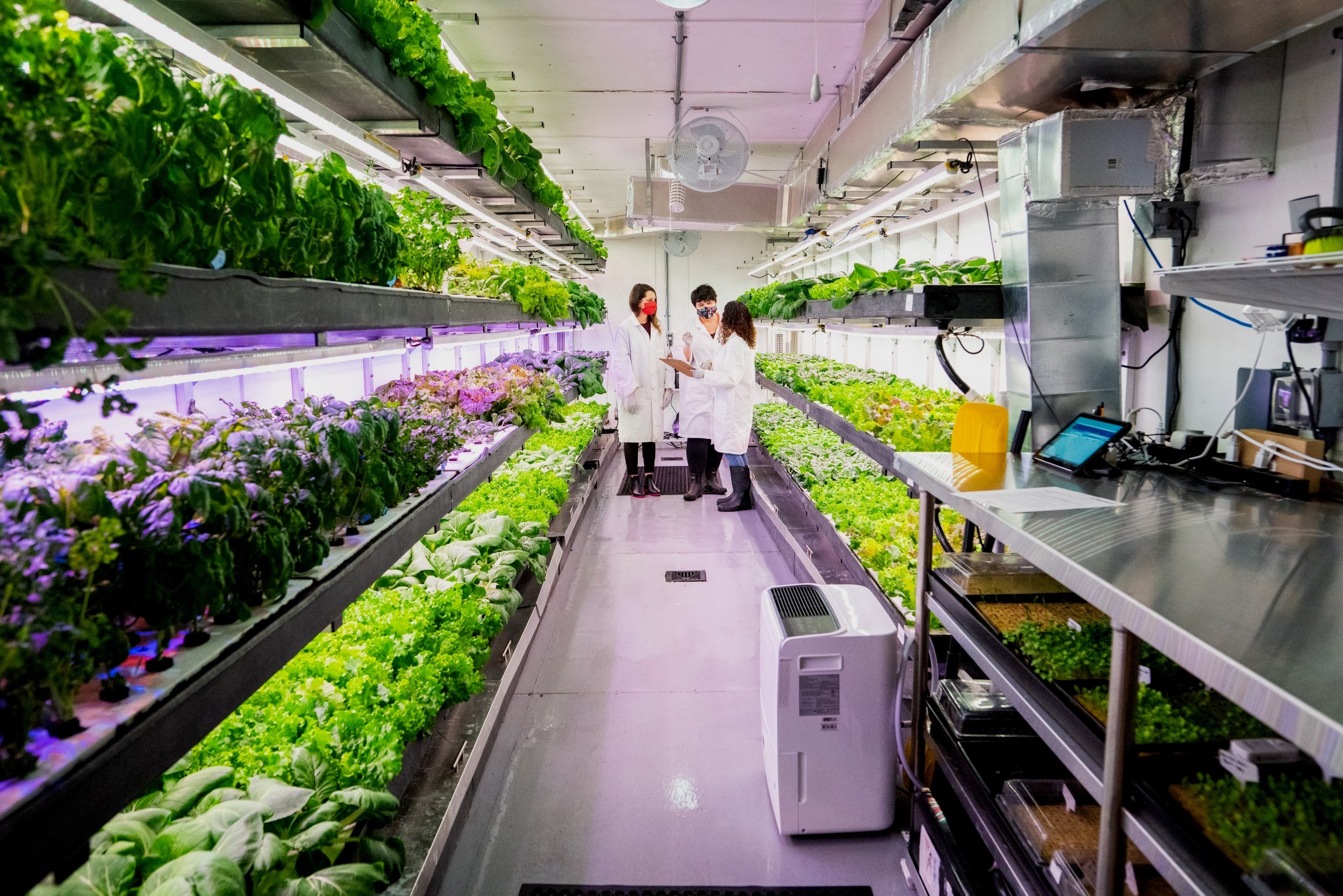Why Growcer doesn’t build vertical farms using shipping containers
What we learned building shipping container farms and modular farms . . .
Growcer is not a container farming company.
We are a modular farming company.
We don’t use shipping containers.
We used to.
But we wanted to create a better home for plants to thrive and a more reliable system for our customers.
A pre-loved (and sometimes, beat-up) shipping container has less growing space, lower insulation values, and less energy efficiency. We learned that although we liked the idea of upcycling materials to build our farms, when it comes to healthy plants and reliable harvests (without wasting precious resources) we knew shipping containers weren’t a fit for the Canadian climate.
But that’s not to say there aren’t instances where shipping containers make sense - they do and it depends on your location and your needs.
However, here’s what we learned when we switched from shipping containers to custom-built, modular farms.
You get more growing space for the same footprint.

In a modular farm built using structural insulated panels (SIP) you don’t skimp on growing space. Instead, because the panels are better insulated, you gain more space, better insulation, and temperature control.
A shipping container is pretty sparse on insulation to start, so to bring it up to a level that indoor growing needs in our climate, you lose space when you insulate the inside of a farm.
Put simply: add insulation, lose space.
In a modular farm built using structural insulated panels (SIP) you don’t skimp on space. Instead, because the panels are better insulated, you gain more space, better insulation (28.5 R-value for you experts), AND temperature control.
2. Higher energy efficiency.
Energy efficiency is hugely important in vertical farming. To lower your operating costs and be better for the planet you want a farm that doesn’t bleed energy through its walls. That’s why we use SIP.
And in extreme temperatures, you can tell the difference between shipping containers and SIP. Do you want to take a gamble in -40°C? Figuring out spray foam insulation in the winter? Probably not.

3. Modular = longer lifespan.
Shipping containers are resilient, we'll give them that. But they also have a 25-year average lifespan compared to our modular farms which last 30 years. And that’s not to say that your farm explodes on your 31st year, just that some retrofits may be necessary to keep it in good working order. Plus, upcycled shipping containers may have already been used for a number of years (10+ in some cases) and carry the scars of pretty hard wear.
4. Smoother operations.
Think about your life as an operator. Do you want to be crammed in amongst shelves in a shipping container? We didn’t think so. With a modular set-up you have at least 4-feet of space in your working aisle (that’s enough for two people to stand side by side comfortably!).
And we haven’t even touched on all the customizability that comes with modular farms - like making them wheelchair accessible.

With a modular set-up you have at least 4-feet of space in your working aisle (that’s enough for two people to stand side by side comfortably!).
5. The sky’s the limit - and the roof is pretty cool too.
One of the improvements we made to our modular farms was to add a slanted roof to improve water flow. Shipping containers have flat roofs - this makes them great for stacking - but not great when it comes to shedding rainwater or snow.
What’s the point?
Let’s take a step back for a bit. We don’t hate shipping containers. We used to build with them!
Growcer’s vision is to make year-round farming more accessible for all, therefore we openly suggest the more accessible option.
It’s also why we switched from an NFT hydroponics set up to a DWC hydroponics set up. Read why that matters for growers here.
We care about the details so you don’t have to. We’ve invested in research to provide a turnkey modular farm that gets you growing year-round and keeps you growing.
We do that by being fanatical about the technology and being generous with our services (from implementation to training to yield optimization).
It’s never been easier to grow year-round than right now. If you’re using a modular farm that is.

